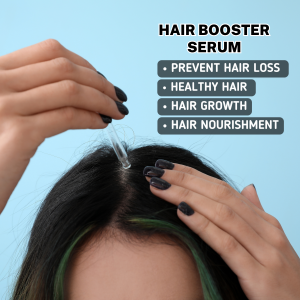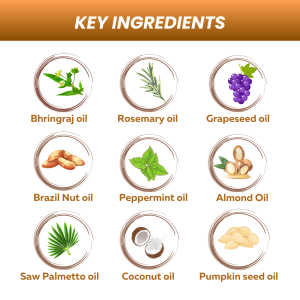Introduction
When it comes to maintaining healthy and luscious hair, it's crucial to acknowledge the profound influence of environmental factors. From air pollution to excessive sun exposure, our hair is constantly exposed to various elements that can affect its health and appearance. In this blog, we will explore the significant effects of the environment on our hair and provide insights into practical measures to mitigate these impacts. We can maintain vibrant and resilient hair by understanding these factors and adopting preventive measures.
- Air Pollution and Hair Health: Impact, Prevention, and Restoration
Air pollution has become an alarming global issue in today's fast-paced and industrialized world. Besides its detrimental effects on respiratory and cardiovascular systems, air pollution also affects hair health. In this section, we will explore the relationship between air pollution and hair health, identifying its impact on hair, strategies to prevent damage, and ways to restore hair vitality.
Air pollution primarily consists of fine particles, volatile organic compounds, nitrogen dioxide, and carbon monoxide, all of which can adversely affect hair health. These pollutants adhere to the scalp and hair strands, leading to multiple concerns, including:
Weakening of Hair Follicles: Harmful particles in polluted air can penetrate the scalp and clog hair follicles, hampering their ability to grow healthy hair.
Increased Hair Loss: Toxic pollutants cause inflammation and oxidative stress, resulting in hair loss or thinning.
Dryness and Frizz: Air pollutants cause hair to dry, be brittle, and be prone to frizz due to stripping hair's natural oil.
Premature Graying: A study suggests that exposure to pollutants accelerates the onset of premature greying, disrupting hair pigment production.
Strategies to Prevent Hair Damage from Pollution
While it may be impossible to avoid air pollution altogether, implementing the following strategies can significantly minimize hair damage:
Protective Hairstyles: Opt for hairstyles that cover the hair, such as braids, buns, or scarves, to create a physical barrier between pollutants and your hair.
Regular Cleansing: It's essential to cleanse the hair regularly using a mild, sulfate-free shampoo to eliminate pollutants and maintain scalp health.
Antioxidant-Rich Diet: Consuming a diet rich in antioxidants, such as fruits and vegetables, helps combat pollution-induced free radicals.
UV Protection: Sunscreen is not just for the skin; it can also benefit the hair. Apply a UV-protecting hair product outdoors to shield the hair from harmful radiation.
Restoring Hair Vitality after Pollution Exposure
Despite preventive measures, hair can still suffer damage from air pollution. To restore its health, consider the following:
Deep Conditioning Treatments: Regularly use deep conditioning masks and warm oil treatments to add moisture and hydration to the hair, combating dryness caused by pollution.
Scalp Detoxification: Gentle exfoliation using natural ingredients like sea salt or activated charcoal can help remove pollutants and cleanse the scalp.
Nourishing Hair Serums: Utilize serums or oils enriched with vitamins, antioxidants, and essential oils to repair and strengthen damaged hair strands.
Professional Hair Treatments: Seek professional assistance from trichologists or hair clinics offering treatments like ozone therapy or scalp rejuvenation to revitalize hair health.
Air pollution undeniably poses a significant threat to our hair health. Pollution particles and toxic compounds can lead to hair damage, hair loss, greying, and dryness. By adopting preventive measures like protective hairstyles, regular cleansing, and a balanced diet, we can minimize the impact of air pollution. However, restorative treatments and professional interventions can help rejuvenate the hair in cases of existing damage. With increasing awareness of this issue, it is crucial to prioritize hair health and take necessary steps to protect and restore it in the face of growing air pollution challenges.
- Impact of Sun Exposure on Hair Health
In our pursuit of achieving the perfect summer glow, we often overlook the potential harm that prolonged exposure to harmful UV (ultraviolet) rays can cause to our hair. Hair also requires adequate protection from the damaging effects of the sun, just like skin. This section aims to shed light on the impact of UV rays on hair health, the different types of damage caused, and critical tips on effectively shielding your precious locks from this often underestimated threat.
Types of Hair Damage Caused by UV Rays
Ultraviolet (UV) radiation consists of UVA and UVB rays. UVA rays penetrate deep into the hair shaft, causing structural and aesthetic damage, while UVB rays primarily impact the hair's outer protective layer. When exposed to prolonged sun exposure, UV rays could break down the proteins in the hair, leading to various forms of damage such as discolouration, dryness, brittleness, split ends, and even hair loss.
Discolouration and Fading: UV rays can degrade the melanin pigments in our hair, resulting in a loss of colour and vibrancy. UV rays are especially problematic for individuals with colour-treated hair, causing their hair shade to fade faster.
Dryness and Frizz: Excessive exposure to UV rays disrupts the hair's moisture balance, causing it to become excessively dry and prone to frizz. Dryness can lead to an increase in hair breakage and overall dullness.
Weakening of Protein Bonds: Structural proteins in the hair, such as keratin, are vital for maintaining hair strength and elasticity. UV radiation can weaken these protein bonds, resulting in hair weakness and breakage vulnerability.
Adequate Protection against UV Rays
Wear Protective Headgear: Hats, visors, scarves, or headwraps can provide a physical barrier between your hair and harmful UV radiation. Opt for wide-brimmed hats or those specifically designed for sun protection.
Use UV-Protective Haircare Products: Invest in quality hair care products that mention UV protection on their labels. These products contain ingredients that help mitigate UV rays' damaging effects on the hair, providing an additional layer of defence.
Seek Shade and Limit Exposure: When spending extended periods outdoors, it's crucial to seek shaded areas whenever possible. Reducing direct sun exposure protects your hair and scalp from potential sunburn.
Maintaining Hair Health and Recovery
Regular Conditioning and Hydration: To combat the dryness caused by UV exposure, incorporate deep conditioning treatments and regular hydrating masks into your hair care routine. These will help replenish lost moisture and restore hair vitality.
Minimize Heat Styling: Heat styling tools can further damage hair when combined with sun exposure. Limit heat styling tools, opt for lower heat settings, and always apply a heat protectant spray to safeguard your hair from potential heat-induced harm.
Trim Regularly: Regular trims remove split ends and prevent further damage from progressing up the hair shaft. Regular trims will maintain overall hair health and avoid breakage caused by weakened strands.
Protecting our hair from the damaging effects of UV rays is crucial to maintaining its strength, shine, and overall health. By following the tips mentioned above and integrating UV-protective measures into our daily hair care regimen, we can effectively shield our locks from the long-term harm caused by sun exposure.
- Impact of Hard Water on Your Hair
Many of us are familiar with "hard water," but do we truly understand its effects on our hair? Hard water contains excessive mineral deposits, particularly calcium and magnesium, which can negatively impact the health and appearance of your hair over time. In this section, we will delve into the impact of hard water on your hair and explore the various ways to mitigate its effects.
The Effect of Hard Water on Hair
Dryness and Frizz: The minerals in hard water strip the natural oils from your hair, making it dry and prone to frizz. Dryness can make your hair appear dull and lacklustre.
Buildup: Over time, the minerals in hard water can accumulate on your scalp and hair, resulting in a buildup that makes it difficult for hair products to penetrate the strands. As a result, your hair may look limp and lifeless.
Colour Fading: Hard water fades hair colour quickly if you colour your hair. The mineral deposits hinder the dye from adhering properly and can even alter the shade of your hair.
Breakage and Damage: When the minerals in hard water interact with heat-styling tools, they can cause your hair to become fragile, leading to breakage and damage.
Mitigating the Effects of Hard Water
Install a Water Softener: A water softener system can help eliminate the excess minerals from your water supply, reducing the negative impact on your hair. This investment can significantly improve the health and appearance of your hair.
Use Clarifying Shampoos: Clarifying shampoos are specially formulated to remove buildup caused by hard water. Use these shampoos once a week to clean your hair deeply and remove any mineral deposits.
Apple Cider Vinegar Rinse: The hair's pH balance can be restored after shampooing by rinsing your hair with diluted apple cider vinegar, which helps remove mineral buildup. This rinse can leave your hair shiny and smooth.
Deep Conditioning: Regular deep conditioning treatments will help counteract the dryness and frizz caused by hard water. Look for deep conditioners that contain hydrating ingredients such as shea butter and coconut oil.
Protective Hairstyles: Minimize heat styling tools and opt for protective hairstyles like braids, buns, or twists. Protective hairstyles will help prevent further damage to your hair and reduce the impact of hard water.
While the effects of hard water on your hair may be disheartening, there are several steps you can take to mitigate its impact and maintain healthy, vibrant hair. Investing in a water softener system, clarifying shampoos, incorporating apple cider vinegar rinses, regular deep conditioning, and practising protective hairstyles can all contribute to combating the harmful effects of hard water. By understanding the impact of hard water on your hair and proactively addressing it, you can ensure your hair remains strong, shiny, and beautiful.
- Impact of Climate on Hair Health and Maintaining Optimal Hair Care
Climate plays a significant role in our overall well-being, including hair health. From extreme heat and humidity to cold, dry air, our environment poses various challenges for our hair. This section discusses the impact of climate on hair health, explores common hair concerns in different temperatures, and provides practical tips to maintain optimal hair care. Let's uncover the secrets to healthy and beautiful hair, regardless of the weather conditions. The climate we reside in can significantly affect the health and appearance of our hair. Here's a breakdown of how different climates impact our tresses:
Hot and Humid Climates
In hot and humid regions, excessive moisture in the air can cause frizz, limpness, and loss of definition for those with curly or wavy hair. Increased sweat and oil production can also result in scalp irritation and hair greasiness.
Cold and Dry Climates
Cold and dry climates tend to reduce the moisture content in the air, leading to dry and brittle hair. Indoor heating systems exacerbate the problem by further drying out the hair, resulting in static, breakage, and overall dullness.
Extreme Sun Exposure
Excessive exposure to the sun's harmful UV rays can damage the hair's cuticles, leading to colour fading, weakened strands, and hair dryness. Additionally, prolonged sun exposure can contribute to scalp damage and an increased risk of sunburn.
Tips for Maintaining Healthy Hair in Varying Climates
To combat the challenges posed by different climates, here are some tips for maintaining healthy hair throughout the year:
Proper Hydration
Maintain optimal hydration levels from within by drinking plenty of water, regardless of the climate. Staying hydrated helps nourish the body and scalp, promoting healthier hair growth.
Climate-Specific Haircare
Tailor your haircare routine to the climate you reside in. For hot and humid climates, use lightweight, anti-frizz products to combat humidity, while in cold and dry temperatures, opt for deeply moisturizing shampoos, conditioners, and hair masks.
Protecting from the Sun
Hair can be protected from the sun's harmful UV rays by wearing a fashionable hat, using protective hair sprays with SPF, or opting for hairstyles that offer coverage, like braids or updos.
Conditioning and Deep Moisturization
Moisturize and condition your hair regularly to keep it hydrated and nourished. Consider using leave-in conditioners, hair oils, or homemade natural hair masks to replenish moisture and repair damage caused by climate-related factors.
Avoid Frequent Heat Styling
Excessive heat styling can further exacerbate the adverse effects of climate on your hair. Avoid using hot tools like flat irons, curling irons, and blow dryers, and embrace air drying whenever possible.
Scalp Care
Pay extra attention to the health of your scalp, as extreme climates can cause scalp dryness or excess oiliness. Utilize gentle exfoliating scalp treatments, avoid harsh shampoos, and maintain a balanced diet to support overall scalp health.
Environmental factors significantly impact our hair health, but we can maintain healthy and resilient hair by understanding these effects and taking preventive measures. Protecting and nourishing our hair from air pollution to excessive sun exposure is crucial to counteract potential damage. Adopting the recommended strategies outlined in this blog can minimize the environmental impact and ensure our hair remains vibrant and beautiful.
References:
- Zhang, L. et al. (2018). The effects of air pollution on hair output. Journal of Cosmetic Dermatology, 17(4), 636-641.
- Iyengar, S., et al. (2019). Impact of air pollution on hair and its prevention through hair care products. Journal of Cosmetic Science, 70(1), 71-82.
- De Groot, A. C. (2019). Air pollution and the skin. Journal of the European Academy of Dermatology and Venereology, 33(S6), 3-9.
- Bin Saif, G. A., et al. (2020). Epidemiology of premature greying of hair in polluted areas. Journal of Clinical and Experimental Dermatology Research, 11(6), 1-7.
- Bilsland, C., & Molinaro, E. (2019). Hair care in summers: A need based on UV rays protection. Journal of Dermatology & Cosmetology, 3(5), 163-165.
- Sayre, R. M., Agin, P. P., & Levee, G. J. (1999). A comparison of in vitro and in vivo testing of sunscreen formulas. Photochemistry and photobiology, 70(3), 286-293.
- Tobin, D. J. (2009). Introduction to skin ageing. Journal of Tissue Viability, 18(2), 5-9.
- Effects of Hard Water on Hair by the Water Quality Association (https://www.wqa.org...)
- Hard Water and Hair: The Causes, Consequences, and Solutions by H2O Distributors (https://www.h2odistributors.com...)
- The Effects of Hard Water on Your Hair and How to Combat Them by The Everygirl (https://theeverygirl.com...)
- Hard Water Hair: 4 Simple Tips for Soft, Healthy Hair by Naturally Curly (https://www.naturallycurly.com...)
- Hair Care: Dealing with Hard Water by UnityPoint Health (https://www.unitypoint.org...)
- Effect of Humidity on the Measured Mechanical and Perceptual Properties of Human Hair- Journal of Cosmetic Science
- Hair Breakage in Normal and Weathered Hair: Focus on Scanning Electron Microscopy Analysis - International Journal of Trichology
- Hair UV Protection and Sunscreens - Cosmetics







